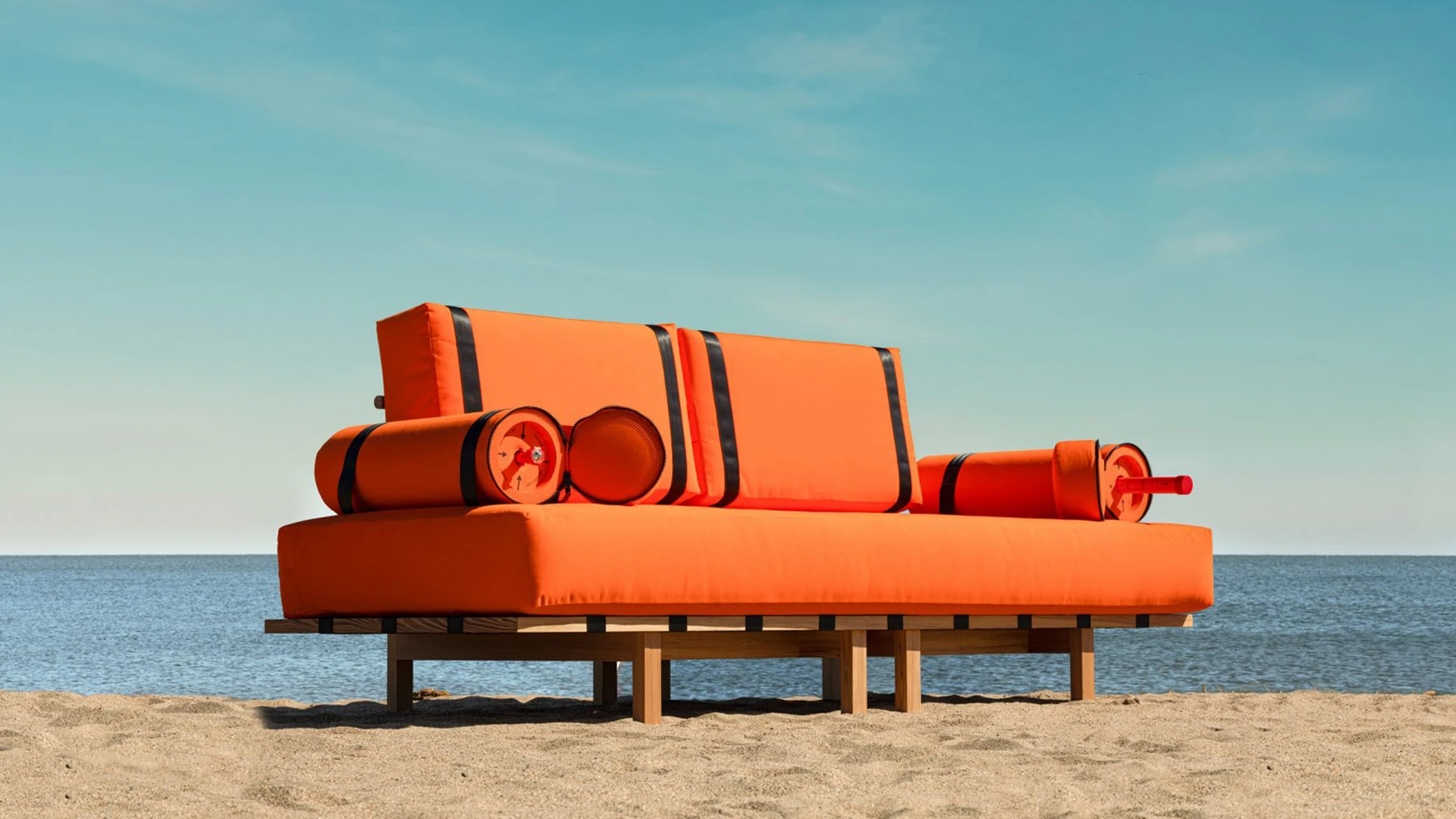
Floating Sofas: The Future is Climate-Responsive Furniture
30-Apr-2025
Photo Courtesy of Mother Design
What if your sofa could double as a life raft?
In 2023, Mother Design unveiled the Bliss sofa - to raise awareness of the lack of readiness of many communities to respond to the climate crisis. In the event of a flood, the Bliss sofa is equipped with flotation cushions, a water-level gauge, emergency flares in the armrests, and a paddle in the backrest.
The design concept of this sofa resonates deeply with the challenges of our times. As climate disasters -- storms, floods, wildfires and more -- grow more frequent and more severe, the risks of displacement and global degradation are stark.
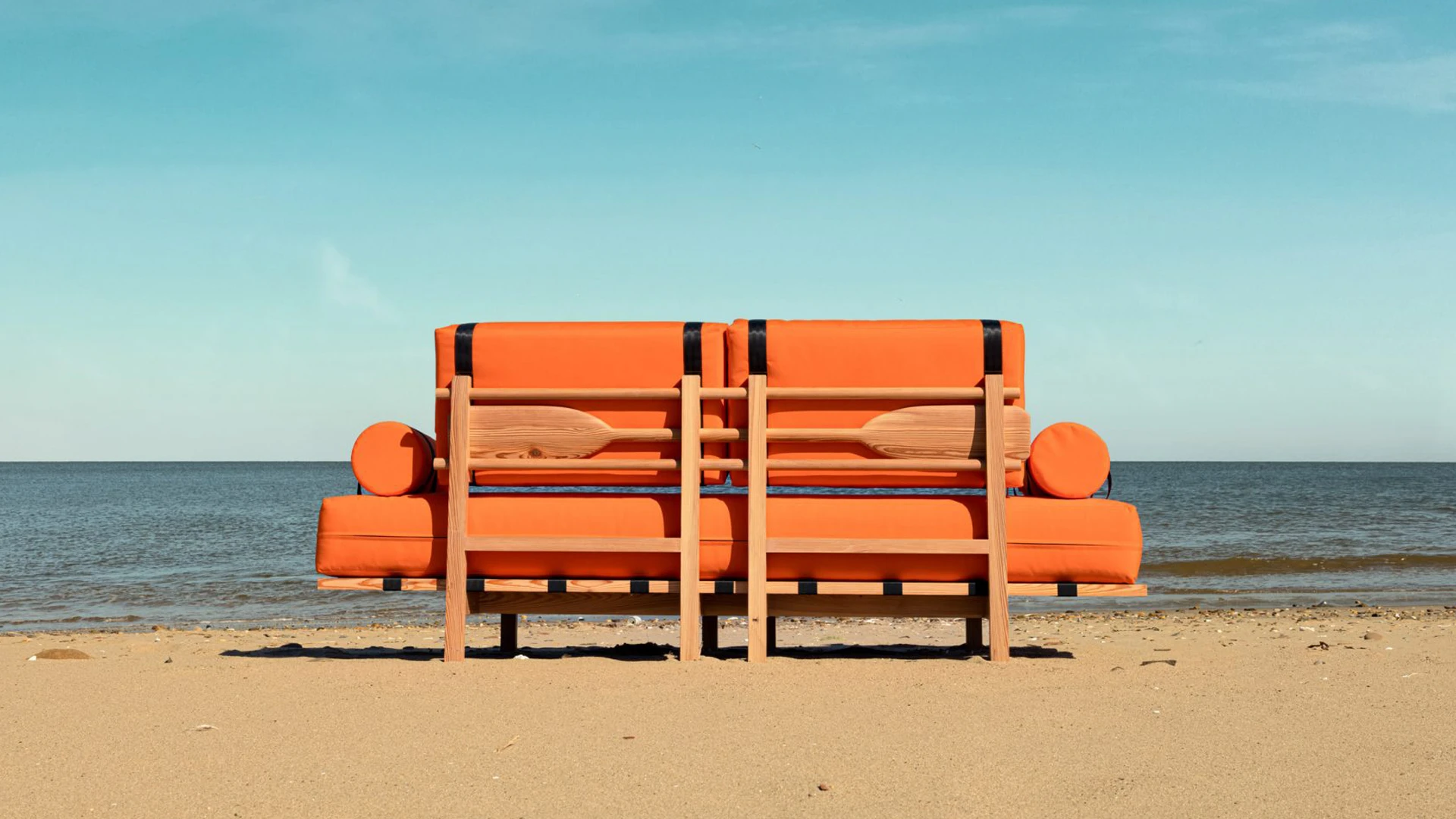
Bliss Sofa by Mother Design

Bliss Sofa by Mother Design
Over the last several years, we’ve seen increasing discussion of the role of climate-responsive design in cities and homes. But what about the furniture inside? If buildings are integral to climate mitigation and resilience, so is the furniture within them. How do we design furniture with a stronger focus on sustainability and adaptability?
From Cities to homes to furniture: climate mitigation and resilience
As climate disasters hit urban populations globally, the concept of 'sponge cities' - designed to combat urban flooding - has been drawing more and more attention. Chinese landscape architect Kongjian Yu created the 'sponge cities' concept to prioritize nature-based infrastructure such as wetlands, rain gardens, and permeable pavements. In 2013, this concept was officially adopted as national policy in China.
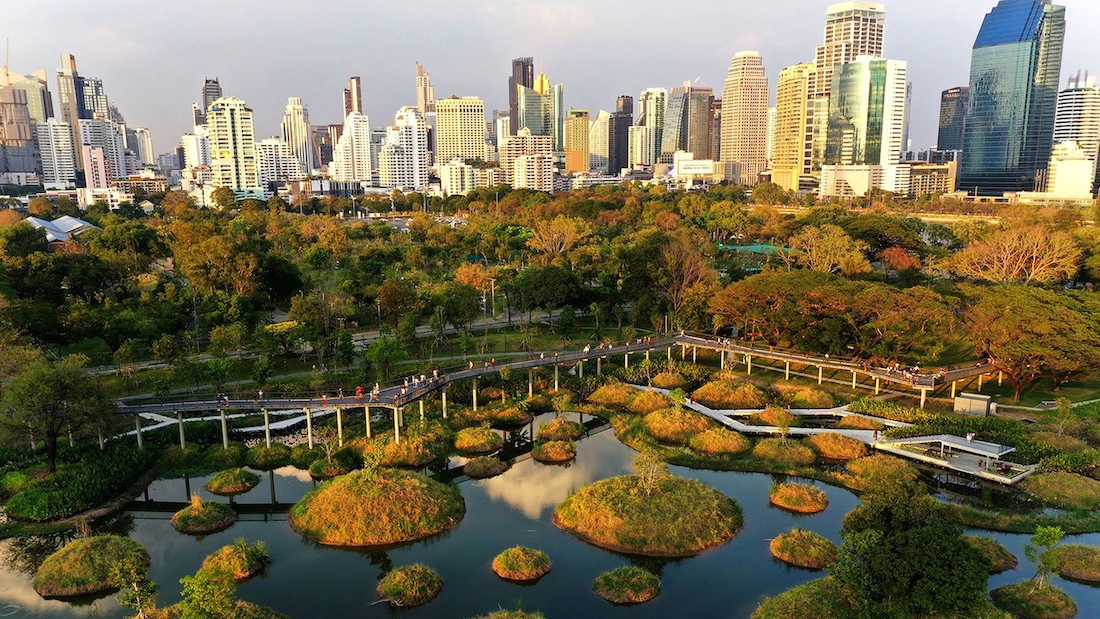
In Bangkok, Turenscape transformed the concrete terrain of a former tobacco factory into man-made wetlands with mini islands. Photo courtesy the Cultural Landscape Foundation
Like cities, our homes should help us face extreme disasters and rising seas. "To protect their inhabitants, homes must be redesigned and retrofitted to incorporate resilient design solutions - from green roofs to stilts and wind towers,” says an Intergovernmental Panel on Climate Change (IPCC) report.
In the U.S., for example, design-firm Snøhetta teamed up with Harvard University researchers to retrofit the HouseZero. Its windows open and close automatically, surrounded by protruding "shrouds" to provide shade, while a glazed solar chimney serves as a vent. After the recent Los Angeles wildfires, ten of the city’s top architecture firms teamed up for the Case Study: Adapt (CSA) project. Their mission is to reimagine houses designed on the principles of modesty in scale, energy and construction efficiency, and climate resiliency.
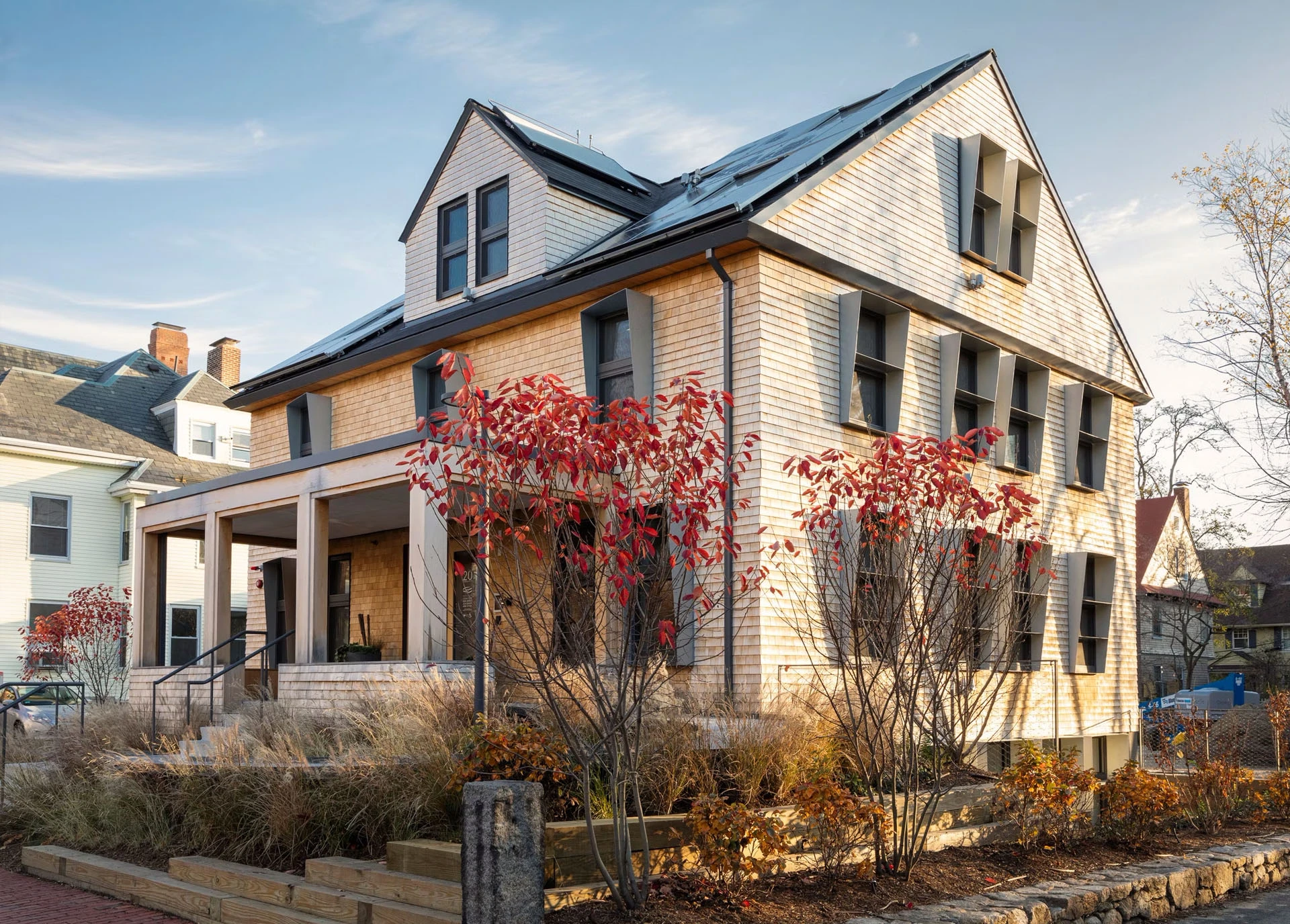
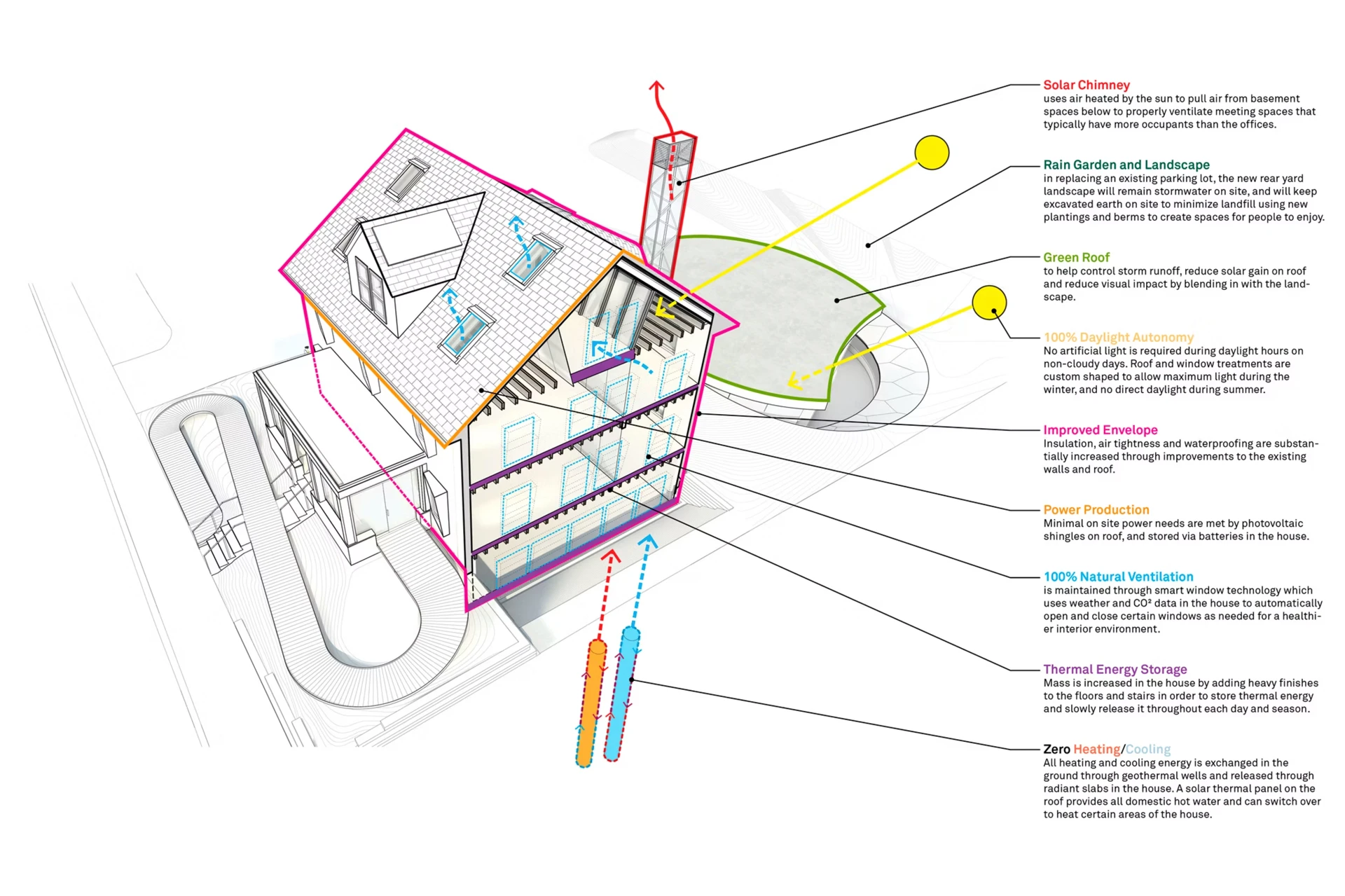
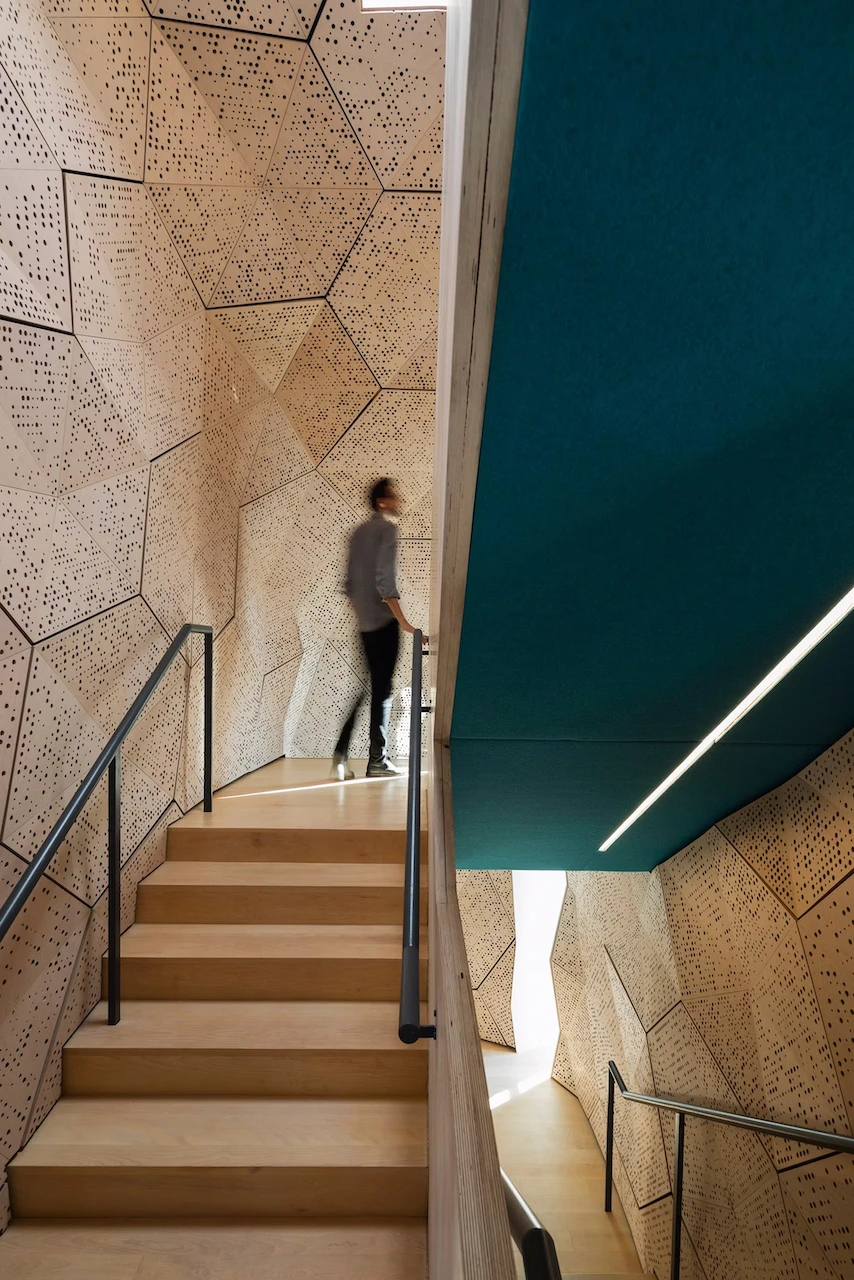
The HouseZero by Snøhetta
To apply the lessons of cities and buildings to designing furniture for climate mitigation and resilience, let's first understand the difference between these two climate strategies:
- Climate mitigation targets the cause of climate change to avoid additional warming. It aims to prevent or reduce greenhouse gas (GHG) emissions - from cars or fossil fuel-powered plants - and by increasing "sinks" that capture and store carbon, such as trees.
- Climate Resilience focuses on adjusting to and preparing for the effects of a changing climate that is already taking place and will continue. It aims to reduce our vulnerabilities and enhance our ability to prepare for and cope with climate hazards.
Embracing climate-responsive design in furniture
Climate-responsive furniture refers to designs that can help us mitigate and become more resilient to the impacts of climate change. Here are three examples:
First is the use of renewable, recycled, and/or carbon-negative materials. For instance, Washington-based Cambium Carbon partners with local arborists and cities to upcycle fallen trees, avoiding waste and turning them into carbon-negative wood for furniture and construction. This wood, called "Carbon Smart Wood," allows manufacturers to create furniture with 26% less CO2e than typically-harvested wood and 7 times less than wood-plastic composites.

A kitchen table by Cambium Carbon
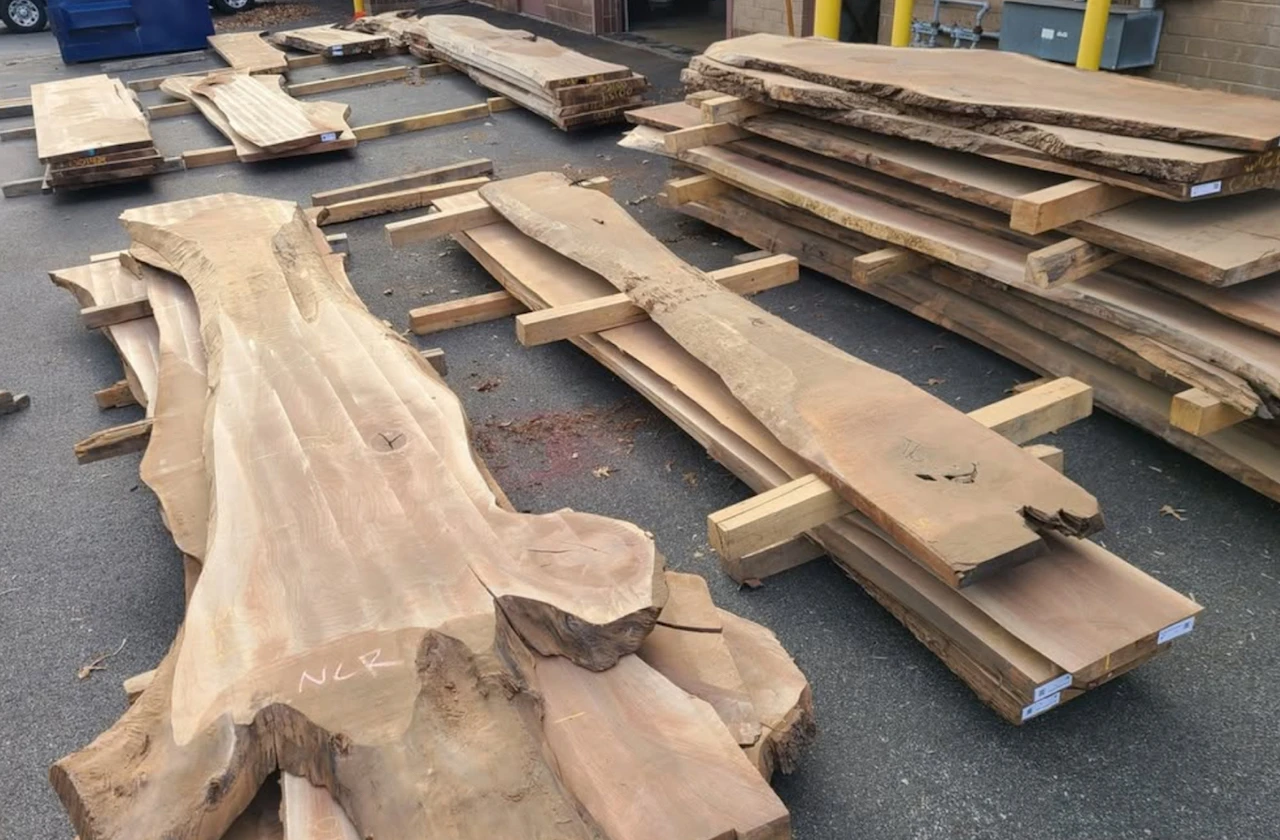
Cambium Carbon uses reclaimed wood
Second, when it comes to buildings, improving energy efficiency by incorporating solar panels and energy-efficient components helps lower energy consumption. Additionally, integrating smart technology that adjusts to environmental changes, like lighting and temperature, can further enhance efficiency.
Let’s apply this to furniture. The Current Table by Marjan van Aubel Studio is a great example of energy efficiency. The table is designed to harvest energy indoors. It has integrated dye-sensitised solar cells (DSSC) that use color properties to create an electrical current similar to the way in which plants use green chlorophyll to convert sunlight into energy.
These solar cells work efficiently even under diffuse light. The energy is stored using an integrated battery, allowing users to charge their devices at any time.
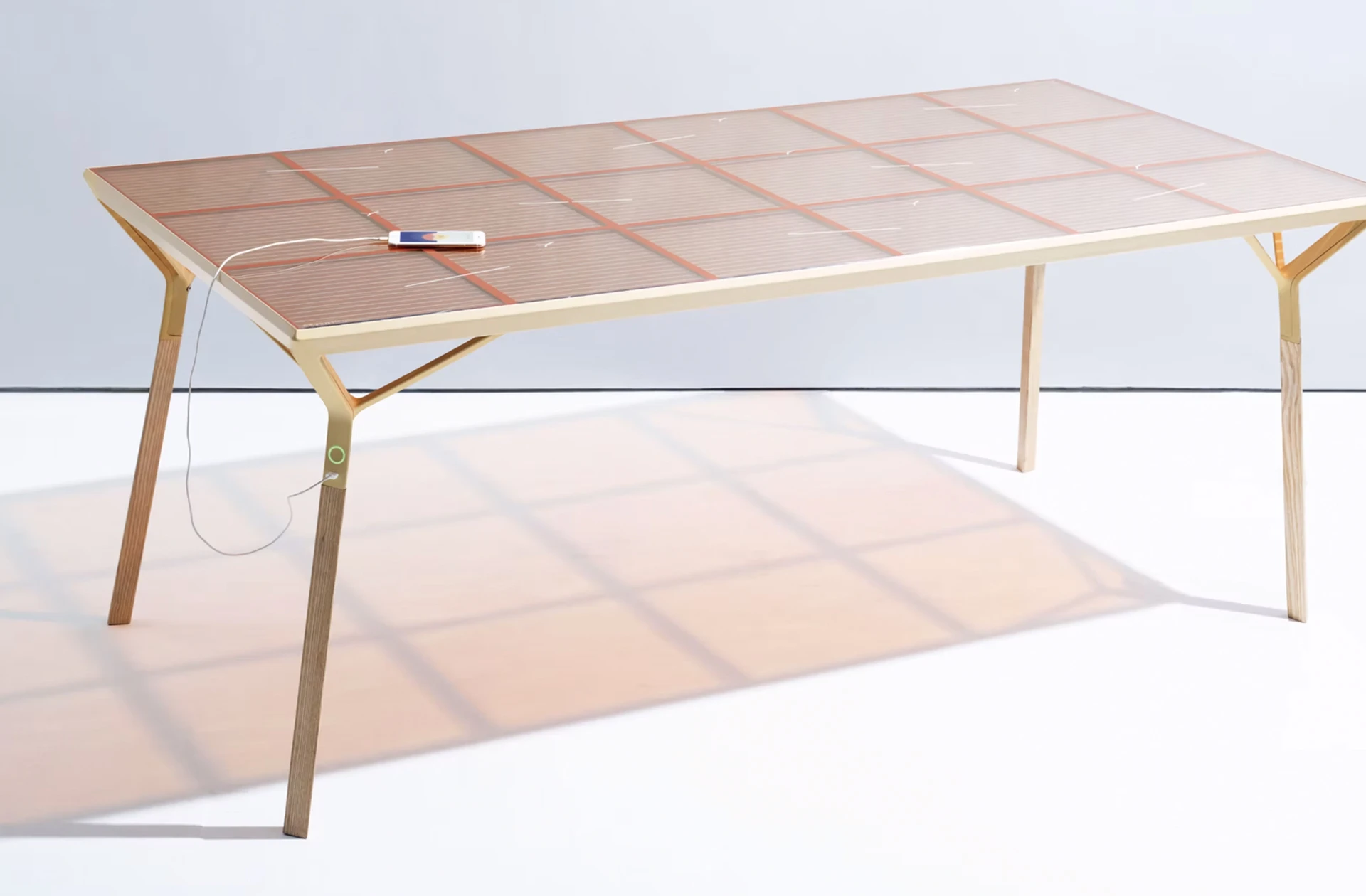
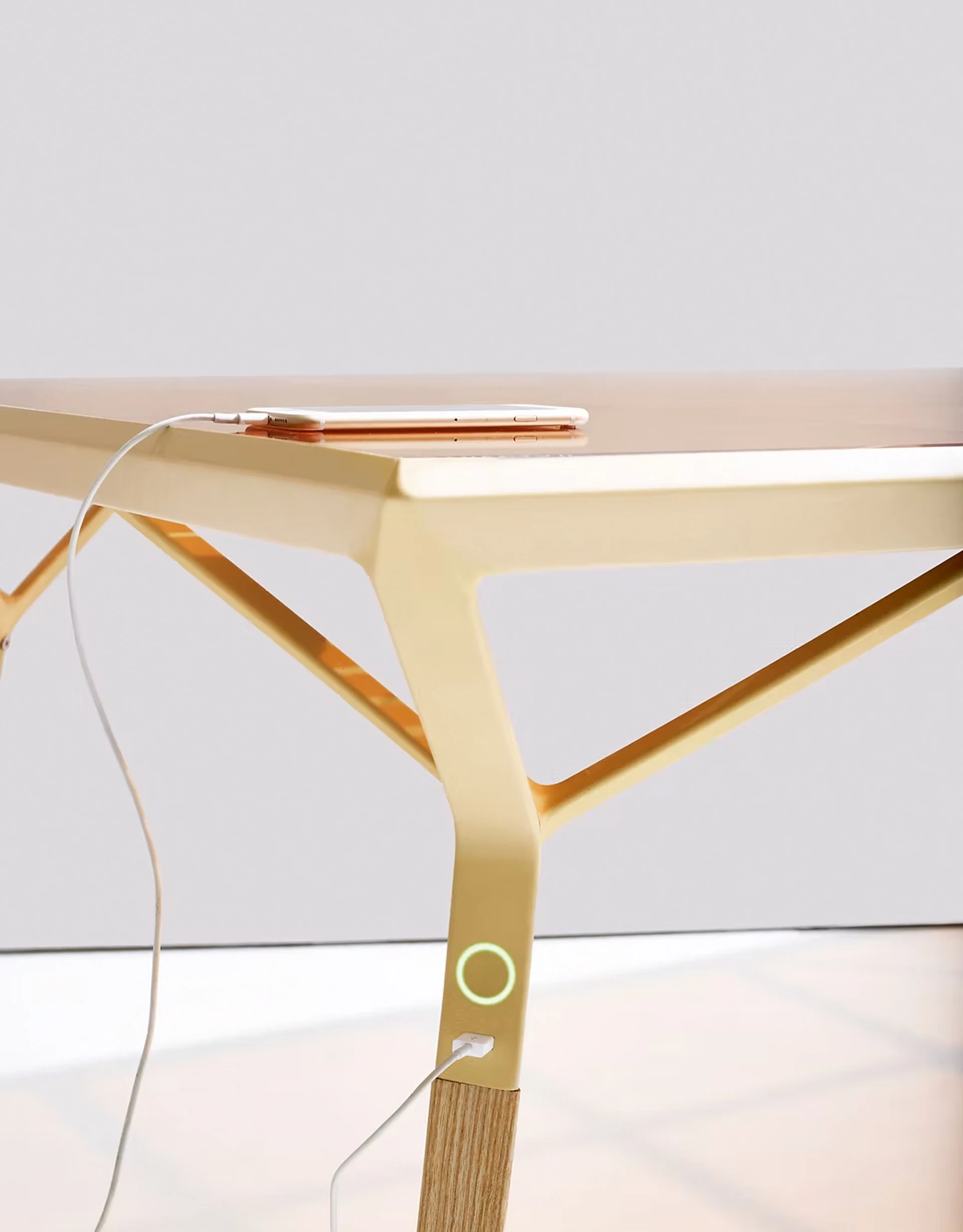
The Current Table by Marjan van Aubel Studio | Photography: Mitch Payne
Third, some furniture designs incorporate elements that support and enrich local ecosystems, like planters or habitats for pollinators. Vestre Habitat - an urban furniture collection by Vestre - investigates approaches to increasing biodiversity in urban spaces through smart furniture design and vegetation interventions. The LOG bench, for example, allows the user to arrange one or many logs and branches in an organized pile to facilitate slow decay.
"Old trees represent continuity.” explains Vestre. “They are vital for conserving biodiversity, they form habitats for many rare insects, fungi, lichen, mosses and plants. Many birds and bats need hollow trees to nest and reproduce in, and birds need resting places."
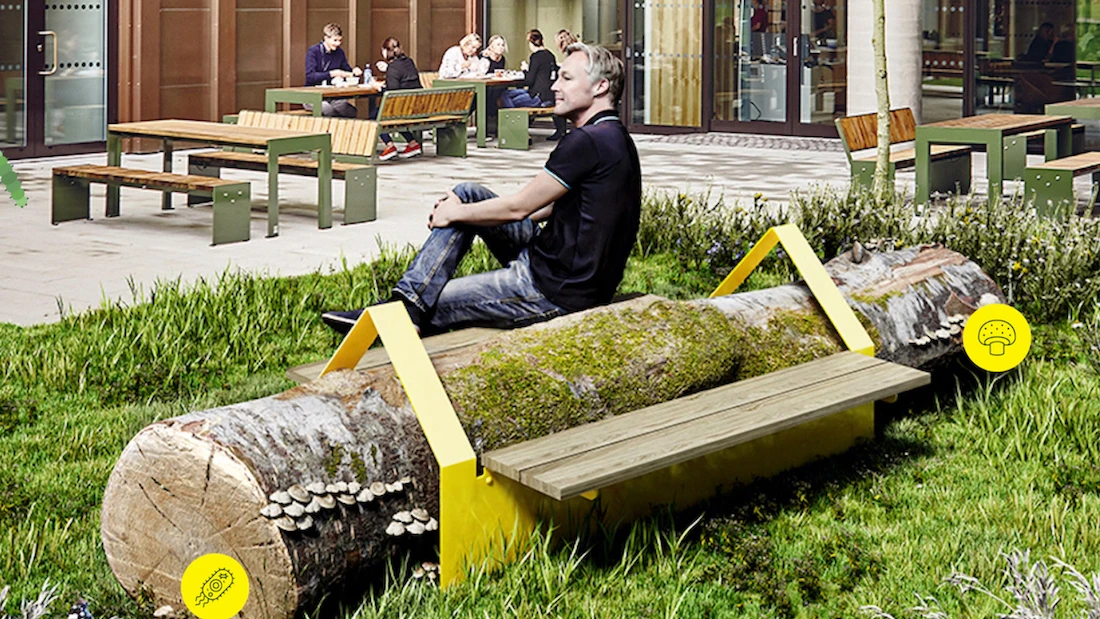
The LOG bench, from the Habitat Collection by Vestre
Carbon-negative materials, energy efficiency, and enriching local ecosystems are three of the growing number of ways through which climate-responsive furniture designers are aspiring to create more sustainable and regenerative living spaces.
Innovators are experimenting with multiple fascinating approaches. To learn more, explore the other articles in our Furniture x Climate series. Subscribe to our newsletter for further insights on furniture and climate.
If you have any comments or questions, reach out to us at [email protected]
